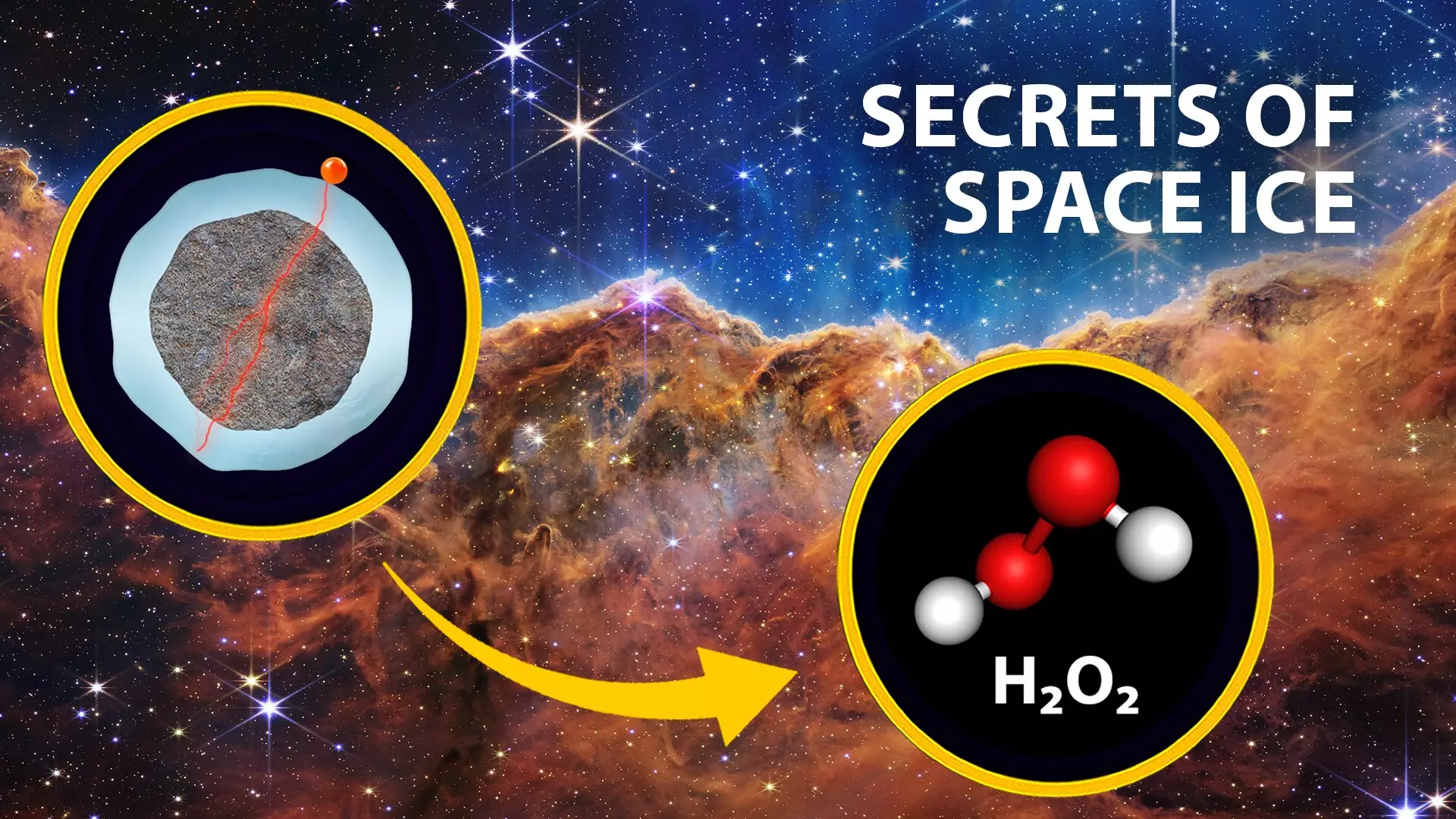At the core of our existence lies an extraordinary narrative: we are stardust—an idea beautifully echoed in the lyrics of the song by Crosby, Stills, Nash & Young. This conception invites us to explore the depths of the cosmos, revealing that we are the products of intricate chemical processes occurring over billions of years among interstellar gas and dust. Recent research is peeling back the layers of this cosmic mystery, particularly focusing on how low-energy electrons, generated by cosmic radiation interacting with ice particles, could have catalyzed the formation of prebiotic molecules essential for life on Earth and beyond.
Kennedy Barnes, an undergraduate researcher at Wellesley College, is set to showcase findings that shed light on this exploration at the upcoming Fall 2024 meeting of the American Chemical Society (ACS). This gathering, which will occur both virtually and in person, will feature an impressive array of approximately 10,000 scientific presentations. Barnes, alongside fellow undergraduate Rong Wu and guided by esteemed professors Christopher Arumainayagam and James Battat, seeks to uncover the significance of low-energy electrons in the genesis of complex organic molecules in space.
A fundamental question driving this research pertains to the comparative efficacy of low-energy electrons and photons in facilitating the chemical reactions that yield extraterrestrial prebiotic molecules. Past studies have hinted that both types of radiation could initiate similar reactions; however, Barnes’ investigation suggests a different dynamic may be at play in the harsh conditions of space.
According to Barnes, their calculations indicate that the population of cosmic-ray-induced electrons bombarding cosmic ice might far surpass the photons. “Our findings imply that electrons could significantly outpace photons in the role they play in the synthesis of prebiotic molecules in extraterrestrial environments,” she explains. This paradigm shift could redefine our understanding of how life’s building blocks are formed beyond our planet.
What makes this research particularly compelling is not only its implications for understanding the origins of life but also its rich potential applications on Earth. For instance, the team’s investigations into the effects of low-energy electrons extend to the study of water radiolysis, which has unveiled the electron-induced production of harmful compounds like hydrogen peroxide and hydroperoxyl radicals. These compounds are significant in environmental contexts, particularly relating to stratospheric ozone destruction and cellular damage from reactive oxygen species.
Barnes elucidates the dual significance of their findings: “Our research could influence medical practices, for example in cancer treatments, which independently involve the application of high-energy radiation.” The connection here is particularly striking, given that a biochemistry professor once remarked that humans are essentially “bags of water,” highlighting the intertwined nature of water’s chemistry and biological processes.
In environmental science, the knowledge gained from these studies contributes to better wastewater treatment techniques, where high-energy radiation can be employed to create low-energy electrons for the breakdown of hazardous substances.
To substantiate their theoretical models, the research team has ventured beyond calculations and simulations into hands-on experimentation. They have constructed an ultrahigh-vacuum chamber housing an ultra-pure copper substrate that can be chilled to extreme temperatures, effectively replicating the conditions found in space. Equipped with an electron gun and a laser-driven plasma lamp, they meticulously bombard nanoscale ice films with either electrons or photons and analyze the resulting molecular compositions.
Barnes insists that their study does not solely focus on microscopic ice particles but embraces larger cosmic entities. For example, the icy surface of Europa, one of Jupiter’s moons, offers a fascinating analog for their findings, especially given the moon’s extensive ice shell that envelops a subsurface ocean.
She emphasizes that this research could enhance interpretations of data collected from current and upcoming space missions, including the much-anticipated results from NASA’s James Webb Space Telescope and the Europa Clipper, set to launch in October 2024. Such data hold the potential to reveal the chemical signatures of distant worlds and influence the formulation of astrobiological models.
Looking ahead, Barnes and her team are not resting on their initial findings. They are diversifying their investigations by altering the molecular composition of ice films and experimenting to see how low-energy electrons can facilitate other forms of prebiotic chemistry. Collaborating with the Laboratory for the Study of Radiation and Matter in Astrophysics and Atmospheres in France, they aim to broaden the implications of their work across various scientific fields.
Reflecting on the knowledge yet to be unveiled, Barnes conveys a palpable excitement: “We are on the brink of discovering extraordinary things about the universe and our very existence.” Indeed, as researchers like Barnes delve deeper into the realm of astrochemistry, they simultaneously illuminate the intricate connections between our Earthly experiences and the cosmic forces that shaped them. This new Space Age of discovery promises to inspire both current and future generations to appreciate the fundamental chemistry that binds us to the stars.

